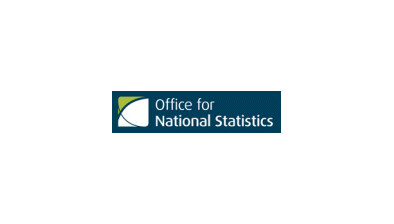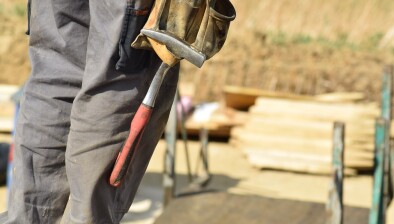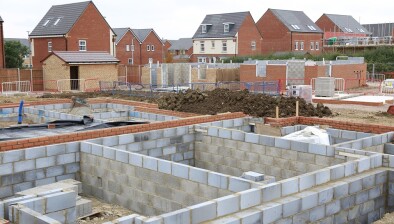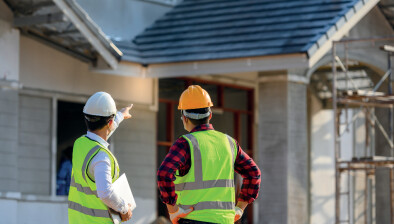Adverse weather contributes to construction output decline
Construction output fell 0.8% in May 2021 with anecdotal evidence from businesses suggesting the adverse weather conditions being a contributing factor, according to the Office for National Statistics (ONS).

Latest data published today found that declines in new work (0.4%) and repair and maintenance 1.5%) both contributed to the monthly decline, with the level of output remaining slightly above its pre-pandemic February 2020 level.
The level of construction output in May 2021 was 0.3% (£43 million) above the February 2020 pre-pandemic level; while new work was 3.5% (£320m) below the February 2020 level, repair and maintenance work was 7.5% (£363m) above the February 2020 level.
In contrast to the monthly fall, construction output grew by 6.3% in the three months to May 2021 compared with the previous three-month period, with increases in both new work and repair and maintenance of 6.6% and 5.8% respectively.
The increase in new work (6.6%) in the three months May 2021 was because of growth seen in all sectors, the largest contributors to this growth were private housing new work and infrastructure, which grew by 7.4% and 9.7% respectively
The increase in repair and maintenance (5.8%) in the three months to May 2021 was because of growth in non-housing and private housing repair and maintenance, which grew by 9.0% and 4.7% respectively.
Industry response
The Federation of Master Builders (FMB) said government and industry must address the national shortage of building materials to reverse the decline in construction activity.
Chief executive Brian Berry said: “Construction output fell in May, pointing to a fragile economic recovery for Britain’s builders. I am particularly concerned by the drop in repair, maintenance and improvement activities, given the high demand for home improvement works that builders are reporting. Action must taken to address the national building materials shortage, as this is restricting builders’ ability to build back better and greener.
“A recent FMB survey found that 93% of builders reported material price increases in Q1 2021, which is an untenable situation. Manufacturers, merchants and builders must work together to maintain the supply of products to independent merchants so that smaller builders can continue to improve, upgrade and green the nation’s homes.”
Clive Docwra, managing director of property and construction consultancy McBains, said: “Given today’s figures show the second successive monthly fall in output after several months of steady growth, it shows just how fragile recovery remains in the construction sector.
“Adverse weather conditions during May undoubtedly contributed to this fall, but the fact that order books dried up is worrying for the industry, with new work contracts 3.5% down on pre-pandemic levels.
“On the plus side, the three months to May figures are more encouraging but to maintain this longer-term trend month-on-month growth will need to pick up again next month.
“In addition, a continued shortage of materials – in particular cement, electrical components, timber and steel – is in turn fuelling price rises for construction firms and increasing the risk of wider inflationary pressures.
“With commercial construction work expected to continue to pick up as offices return over the next few months, this materials shortage could also mean a bottleneck in the supply chain that means more projects may be put on hold, putting any revival at risk.”
Gareth Belsham, director of the national property consultancy and surveyors Naismiths, commented: “Torrential rain may have dampened the official output figures for May, but there’s no doubting the heat still in the construction sector.
“With both demand and sentiment still very strong, few are worrying about the second successive monthly drop in output. April and May’s figures are no disaster, but they do look anaemic compared to the extremely rapid growth posted at the start of the year.
“On a quarterly basis the direction of travel is firmly upwards – up 6.3% compared to the previous three months – and total output is still above its pre-pandemic level.
“Within the industry the star performers are infrastructure – now up a fifth on its pre-pandemic level – and private sector housebuilding, both of which continued to expand in May despite days lost to tropical downpours.
“Nevertheless the second stumble in a row shows there is nothing irresistible about the construction industry’s sprint. Severe supply side issues are throwing obstacles in projects’ path – average wages are rising as contractors fight to lure workers, and material costs are surging as demand far exceeds supply.
“The difficulty of getting hold of key materials like steel and timber risks knocking existing projects off course and is pushing up tender prices for future work.
“But frustrating though these issues are, they are speed bumps for an industry well versed in handling boom and bust. The phenomenal rate of growth seen in the early months of 2021 was always going to be hard to maintain, and overall things are now settling into a better rhythm.”
Mark Robinson, group chief executive at SCAPE, added: “The shortage of materials and skilled workers is clearly beginning to take its toll, reducing the sector’s resilience and risking its capacity to keep pace with the growing demand created by the economic recovery. It’s more important than ever that we work together to prevent project budgets and timescales from spiraling and the industry’s revival from faltering.
“Sustained investment will be key if these challenges are to be overcome. Expanding the trades which are on the government’s shortage occupation list will be a strong first step to easing the pressure. But attracting and training the talent of tomorrow is ultimately the best long-term solution, ensuring that both the sector and the economy bounce back fully.”













